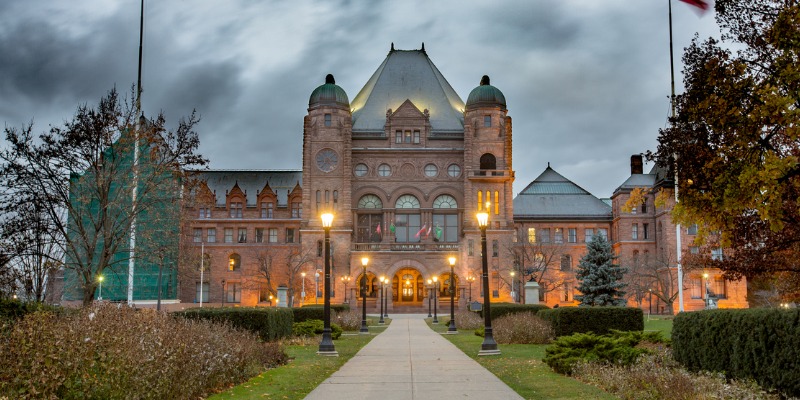Ford government faces pivotal choice in upcoming budget

In the 2018 general election, Doug Ford’s Progressive Conservative Party of Ontario was elected based largely on promises to balance the budget and sustain provincial finances.
Since then, the COVID-19 virus and the resulting public health and economic crises has blown Ontario’s fiscal plan to smithereens. Revenues went down, spending went up, and an already significant budget deficit increased dramatically from $8.7 billion last year to $38.5 billion in 2020/21. Meanwhile, provincial debt soared to almost $400 billion.
As the Ford government prepares to table Ontario’s 2021 budget later this month, it must decide whether to allow provincial debt to grow and whether to chart a plan to balance the budget over time.
A look at the 2020 budget tabled last autumn gives us a sense of what the Ford government must do to achieve balance. According to that budget’s forecasts, in 2022/23 the provincial government will collect $160.2 billion in revenue. Obviously, this means that, unless the government wishes to implement tax increases, it must bring total spending down to that same level.
Unfortunately, the task of bringing total spending in line with revenues has been made harder by debt accumulation, which has contributed to rising interest costs. Specifically, debt interest is expected to increase to $13.9 billion in 2022/23—an 11 per cent increase from this year.
So, to balance the budget by 2022/23, the Ford government must get program spending (all spending minus debt interest) down to $146.3 billion in that year.
A look at Ontario’s recent fiscal history suggests this target is likely a manageable one if COVID-related spending increases planned for this year and next are in fact temporary, as the government has suggested they will be. In 2019/20, before COVID wrought havoc on the provincial budget, program spending was $152.3 billion. If the Ford government can get nominal spending back down to pre-COVID levels over the next few years, it will shrink the deficit from $38.5 billion this year to $6 billion in 2022/23.
If we go a little bit further back in time, to 2018/19 (the last year the Wynne government wrote the budget), we see that program spending stood at $148.8 billion. This means that for the Ford government, bringing nominal spending down to the level it inherited would be enough to shrink the deficit from $38.5 billion this year to $2.5 billion in 2022/23. A small nominal spending reduction would suffice to balance the budget.
In short, to balance the budget by 2022/23 the Ford government need only bring nominal program spending to just slightly below what it inherited from the Wynne government, which the PCs frequently scolded as profligate.
Of course, there’s been mild inflation in recent years and the population has grown. A small nominal spending reduction would therefore constitute a larger reduction in real per-person spending. This, however, is not an unreasonable expectation given the Ford government was elected largely on an explicit promise to balance the budget by reducing spending.
The Ford government’s top priority at the moment should be ensuring that adequate resources are available for any necessary short-term COVID-related public health or economic measures. However, if the government remains committed to addressing Ontario’s fiscal challenges, it should develop a plan to bring nominal spending back down to the level it inherited from its predecessors to fulfill its promise to bring sustainability back to provincial finances.

